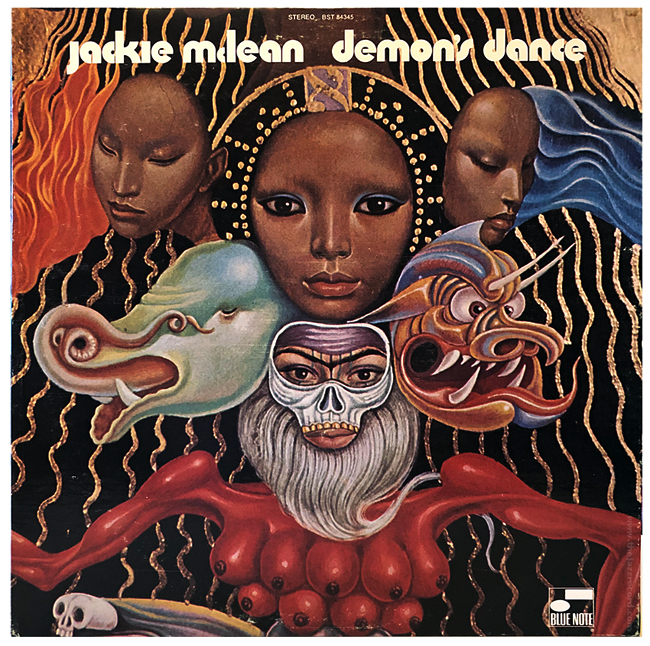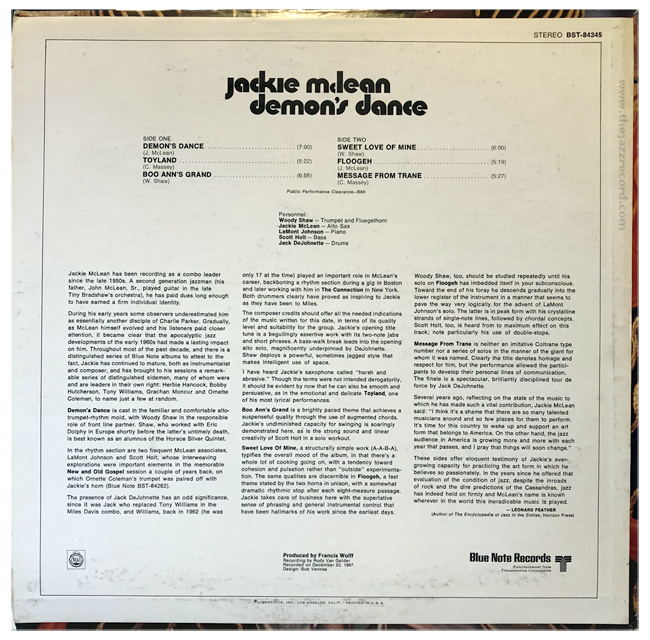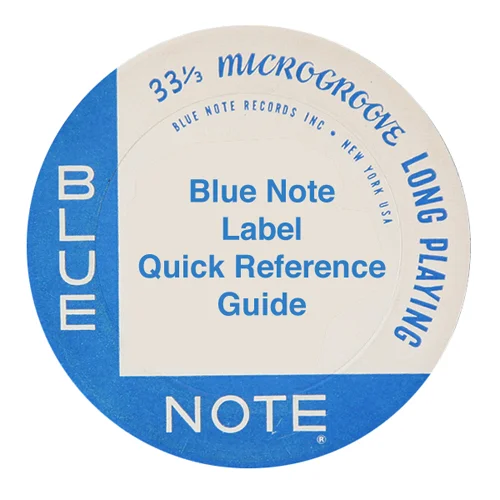A Fitting Finale: Jackie McLean - "Demon's Dance"
/

Jackie McLean • Demon’s Dance • 1970 • Blue Note Records
Recorded December 22, 1967 at Van Gelder Studio, New Jersey
The Tracks:
A1. Demon’s Dance
A2. Toyland
A3. Boo Ann’s Grand
B1. Sweet Love Of Mine
B2. Floogeh
B3. Message From Trane
The Players:
Jackie Mclean - Alto Saxophone
Woody Shaw - Trumpet
LaMont Johnson - Piano
Scott Holt - Bass
Jack DeJohnette - Drums
The Selection:
The Vinyl:
A beautiful first Liberty Records pressing, on the classic blue-and-white label, very likely one of the last original recordings to be issued in this incarnation before it was phased out (Demon’s Dance was recorded in 1967, but not released towards the end of 1970, most likely in November). The sound quality is excellent, as to be expected with a near mint copy, providing an immersive listening experience.
This one was always high up on my wish list, not so much for the music - which is reason enough to want it - but because of that killer tripped out cover. It has always stood out in the world of Blue Note cover art: there’s nothing else quite like it in the label’s discography. It was designed by Bob Venosa, who appears to have worked at Blue Note in the 1960s, but there’s really not much info on him out there at all, other than that he was behind the cover art of Santana’s Abraxas, one of the most recognizable rock album covers from the 1970s.
Demon’s Dance was apparently popular enough to warrant re-presses by the label up until 1975, so if you are on the lookout for the album be aware it was released on the later “black b” and “white b” label versions, which may be available for a nice price. Overall, though, the LP in any form does seem to be somewhat rare: as of this writing there were only two copies of the album on vinyl up for auction on eBay.
The Music:
Demon’s Dance was the final album Jackie McLean released on Blue Note - his twenty-first LP for the label - and it is a fitting finale to a decade’s worth of recordings that saw McLean move from the hard bop sound he helped pioneer in the 1950s to a more complex and open form of jazz that combined the soulfulness of hard bop with the space and structure (or lack thereof) of the free jazz movements. While Demon’s Dance is definitely more post-bop than free jazz in comparison with some of McLean’s most important work from only a few years earlier (Destination…Out! and One Step Beyond in particular), it is an adventurous outing nonetheless. The title track tells you all you need to know about what you’re getting into with the record, it’s at times both ominous and soulful, with great soloing and vamping all around.
As a bandleader McLean was second to none and his talents are on full display here, bringing together a group of young players and making an album that sounds like they have been playing together for years. Of particular interest to my jazz tastes is the presence of a young Woody Shaw on the trumpet just a few years before he would hit the studio to record Blackstone Legacy, his debut album as a leader of his own group (on Demon’s Dance, we hear the first recorded version of “Boo Ann’s Grand,” one of my very favorite of Shaw’s originals). His playing here is completely on point and is the perfect foil for McLean’s distinctive alto sound.
Add in a crack rhythm section - made up of the relatively obscure duo of Lamont Johnson and Scott Holt joining a young, but still dynamic, Jack DeJohnette - and you’ve got all the elements needed for one of the last classic modern jazz album’s to be released on Blue Note. It’s the perfect finishing touch for McLean as he wrapped up his time at Blue Note, an album the defies easy categorization, yet works on so many different levels.
The Videos:
I posted this video a few years back, but it’s quite relevant to this post (and always worth revisiting): Woody Shaw (trumpet), Jackie McLean (alto), Cedar Walton (piano), Buster Williams (bass) and Billy Higgins (drums) at the 1986 Mt. Fuji Jazz Festival performing a burning take of Sonny Clark’s classic "Cool Struttin'." Five legendary players tearing through a legendary jazz classic, what more could you want?












